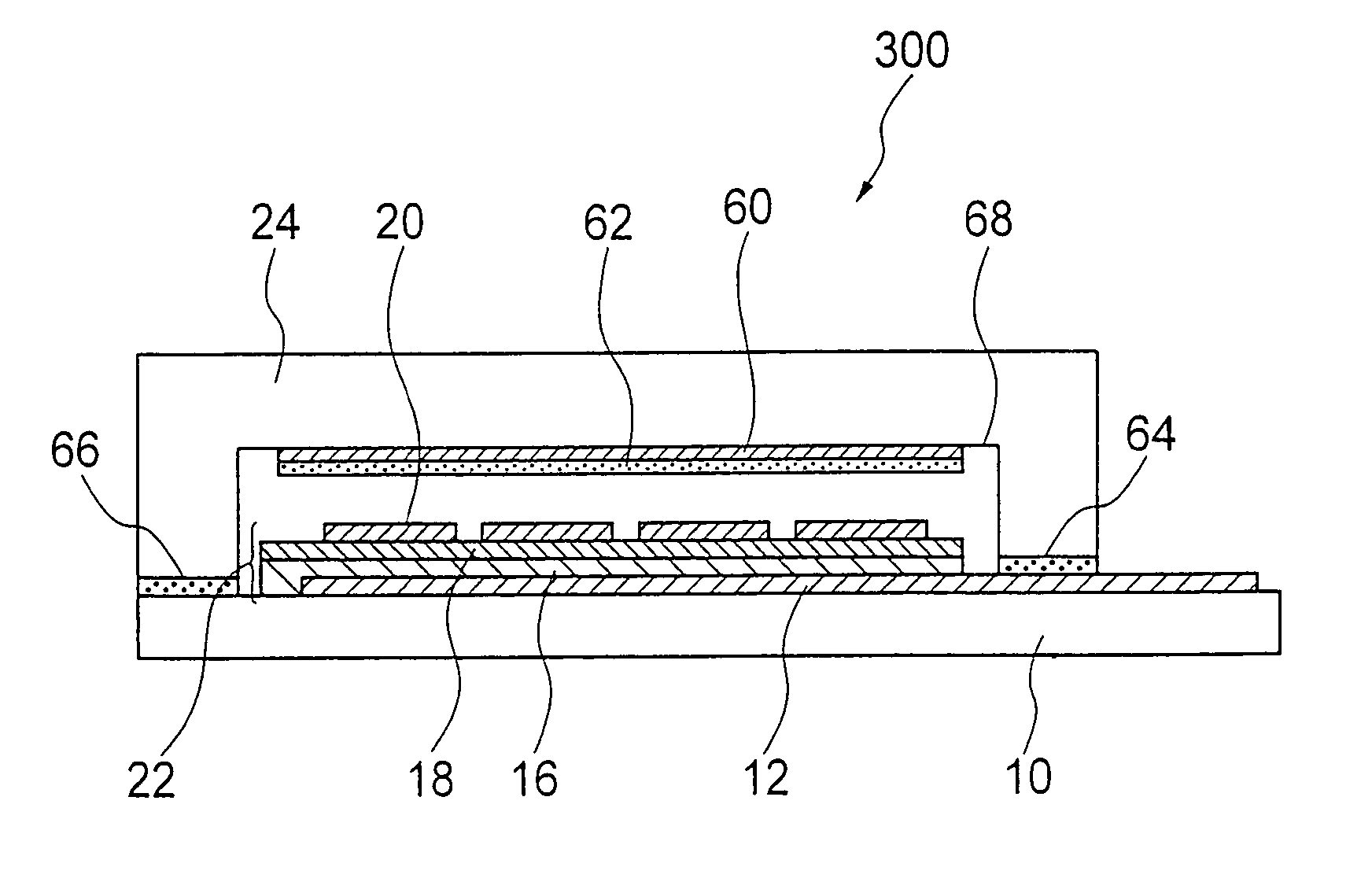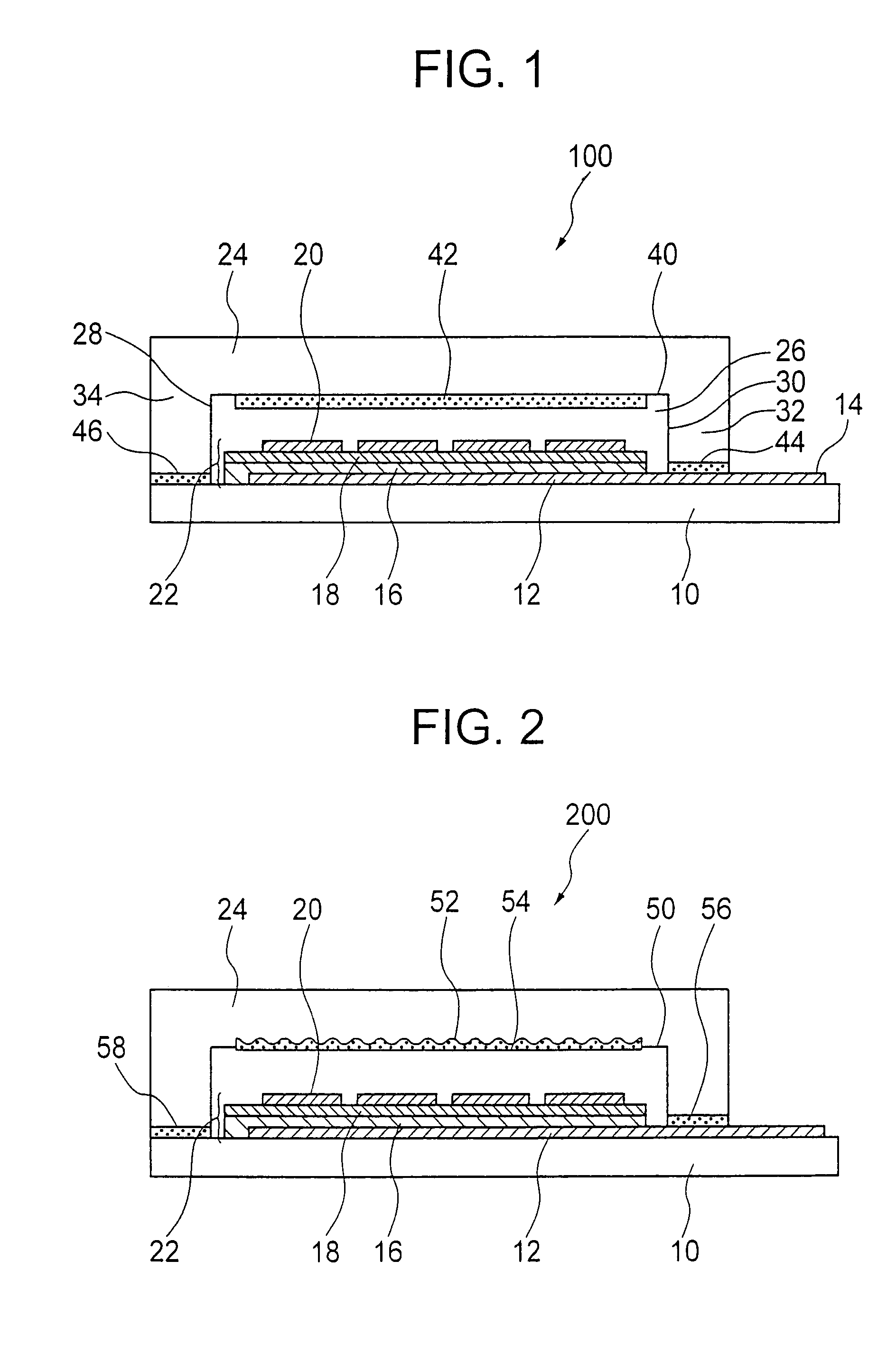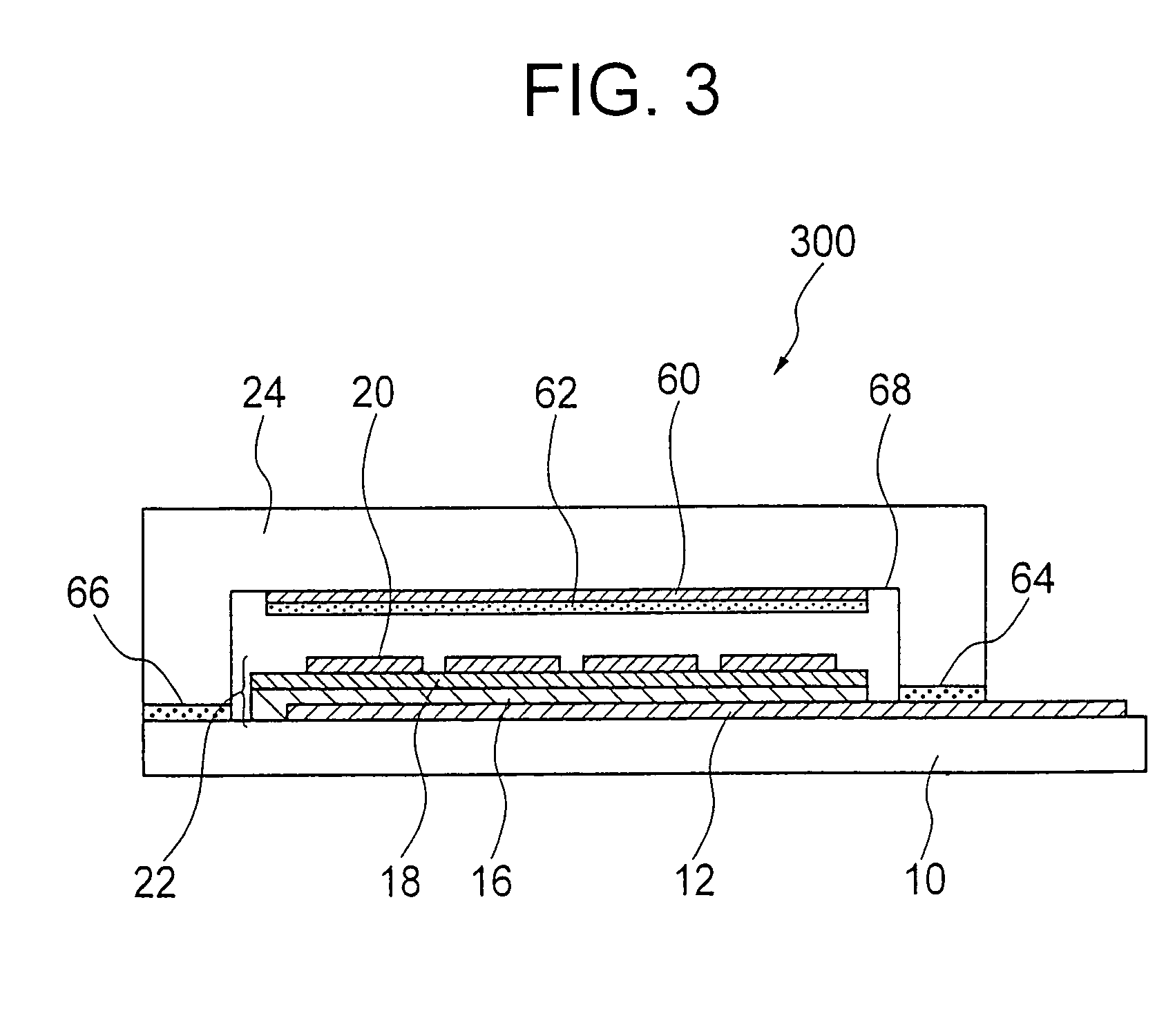Organic electroluminescent device and method for fabricating same
a technology of electroluminescent devices and organic el, which is applied in the direction of discharge tube luminescnet screens, natural mineral layered products, transportation and packaging, etc., can solve the problems of insufficient elimination of ingress of moisture from the interface between the above layers, poor moisture resistance, and affect the organic el device. , to achieve the effect of generating less number of dark spots and excellent long-term moisture resistan
- Summary
- Abstract
- Description
- Claims
- Application Information
AI Technical Summary
Benefits of technology
Problems solved by technology
Method used
Image
Examples
first embodiment
[0021]An organic EL device 100 of a first embodiment shown in FIG. 1 includes an EL stacked structure 22, or an organic EL thin film layers, including an organic luminescent layer 18 and a hole transport layer 16 sandwiched between an anode 12 and a cathode 20. The stacked structure 22 is sealed between a transparent substrate 10 and a sealing can 24. The organic EL device 100 has a desiccant-containing layer 42 formed on the inner surface 40 of the sealing can 24.
(1) Transparent Substrate
[0022]The transparent substrate used in the first embodiment is not especially restricted so long as the transparent substrate supports the stacked structure, allows external emission of light from the stacked structure and shields the interior of the organic EL device from the atmosphere. The transparent substrate is preferably a glass substrate or a transparent polymer substrate because of their excellent light transmittance and the stability and the durability of the resulting organic EL device....
second embodiment
[0045]A second embodiment shown in FIG. 2 is a modified example of the first embodiment. An organic EL device 200 of the second embodiment includes the stacked structure 22 formed by the organic luminescent layer 18 and the hole transport layer 16 positioned between the anode 12 and the cathode 20. The stacked structure 22 is sealed between the transparent substrate 10 and the sealing can 24. A concave-convex surface 52 is formed on the inner surface 50 of the sealing can 24, and another desiccant-containing layer 54 is formed on the concave-convex surface 52.
[0046]The concave-convex surface 52 has an anchoring effect for firmly fixing the desiccant-containing layer to the inner surface of the sealing can. The desiccant-containing layer 54 easily changes its shape in accordance with the concave-convex surface 52 to increase its surface area resulting in elevation of the moisture absorbing ability.
[0047]Although the shape of the concave-convex surface 52 is not especially restricted ...
third embodiment
[0050]A third embodiment shown in FIG. 3 is a modified example of the first embodiment. An organic EL device 300 of the third embodiment includes the stacked structure 22 formed by the organic luminescent layer 18 and the hole transport layer 16 positioned between the anode 12 and the cathode 20. The stacked structure 22 is sealed between the transparent substrate 10 and the sealing can 24. A desiccant-containing layer 62 is layered on the inner surface 68 of the sealing can 24 by using an adhesive 60.
[0051]The use of the desiccant-containing layer 62 in the form of a sheet enables the elevation of the effect of the fabricating step, or the attainment of the low-cost fabrication because a significant number of the desiccant-containing layers can be prepared at a time.
[0052]The desiccant-containing layer 62 and the adhesive 60 in the third embodiment will be described.
(1) Desiccant-Containing Layer
[0053]The desiccant-containing layer 62 used in the -third embodiment has the functions...
PUM
| Property | Measurement | Unit |
|---|---|---|
| thickness | aaaaa | aaaaa |
| thickness | aaaaa | aaaaa |
| particle size | aaaaa | aaaaa |
Abstract
Description
Claims
Application Information
 Login to View More
Login to View More - R&D
- Intellectual Property
- Life Sciences
- Materials
- Tech Scout
- Unparalleled Data Quality
- Higher Quality Content
- 60% Fewer Hallucinations
Browse by: Latest US Patents, China's latest patents, Technical Efficacy Thesaurus, Application Domain, Technology Topic, Popular Technical Reports.
© 2025 PatSnap. All rights reserved.Legal|Privacy policy|Modern Slavery Act Transparency Statement|Sitemap|About US| Contact US: help@patsnap.com



